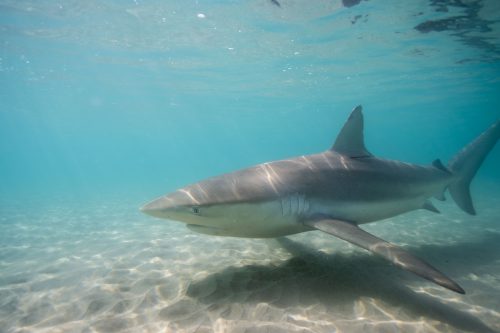After about two years, they returned to the area near the Orot Rabin power plant in Hadera. For the first time since then, the long-term research on the super predators in the Mediterranean Sea and the tagging of the sharks began in 2016

The two sharks, Sylvie and Judy, returned after about two years to the area near the Orot Rabin power plant in Hadera. For the first time since the long-term research on the super predators in the Mediterranean Sea and the tagging of the sharks began in 2016, acoustic data from two sharks that were tagged two years ago by the team of researchers from the Maurice Kahn Marine Research Station of the University of Haifa were received with great joy. "Sylvie and Judy, gray sharks 3.07 and 2.89 long respectively, who survived during almost two years in the Mediterranean Sea known to be very hostile to sharks and returned to the Hadera area. Their return can provide us with additional insights into the breeding cycle of the sharks, their survival over time, growth rate and estimation of the size of the shark population in the Eastern Mediterranean", said Dr. Aviad Sheinin, head of the super carnivores department at the Maurice Kahn Marine Research Station, the Department of Marine Biology, the school of marine sciences named after Charni, University of Haifa.
In order to collect data on the presence of previously tagged sharks without the need to catch them again, most sharks are given their own acoustic tag which is a kind of transmitter the size of a finger battery that transmits the unique shark code for about eight years which is picked up by various receivers deployed at several points in the Mediterranean Sea in Israel. From the signal test, which was done recently, it was found that the two gray sharks that were tagged at the beginning of 2017 have returned again. This is the first record of leeks returning between monitoring seasons. "So far we have seen that the tagged sharks stay in the warm water for most of the winter and leave in the spring and we have not seen them again. We estimated that the arrival of the sharks in the warm waters in the winter is related to a reproductive cycle that lasts about two years, it is possible that the first documentation of the return of sharks after two years explains this phenomenon. This year we will conduct ultrasound tests and blood tests in order to continue to investigate this unique phenomenon" said Dr. Sheinin excitedly.

One response
It is not clear what information they are getting from the tagging other than the obvious fact that sharks congregate in the warm waters of the power plant. The fact that sharks are able to survive more than two years in the Mediterranean can be known without documentation, just measure the sharks in the sea and you will understand for yourself. Sharks are an animal that appears a lot in studies. I assume that their reproductive cycle and lifestyles have already been studied in depth.